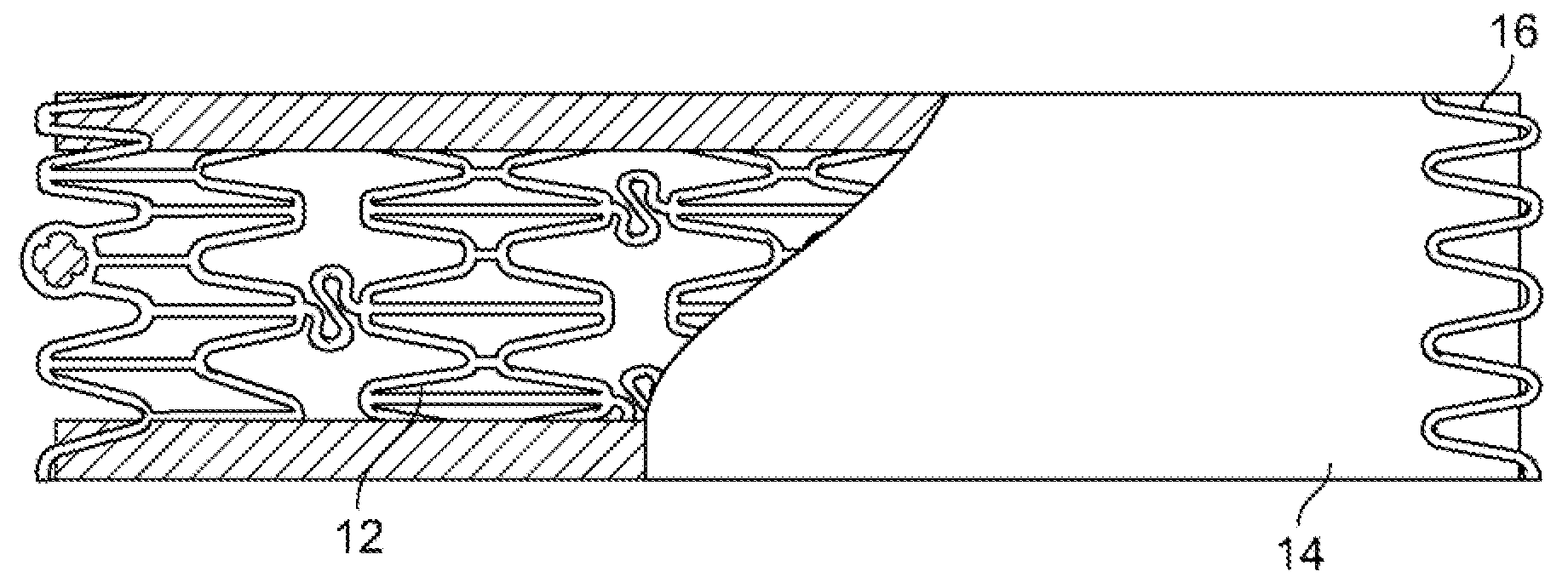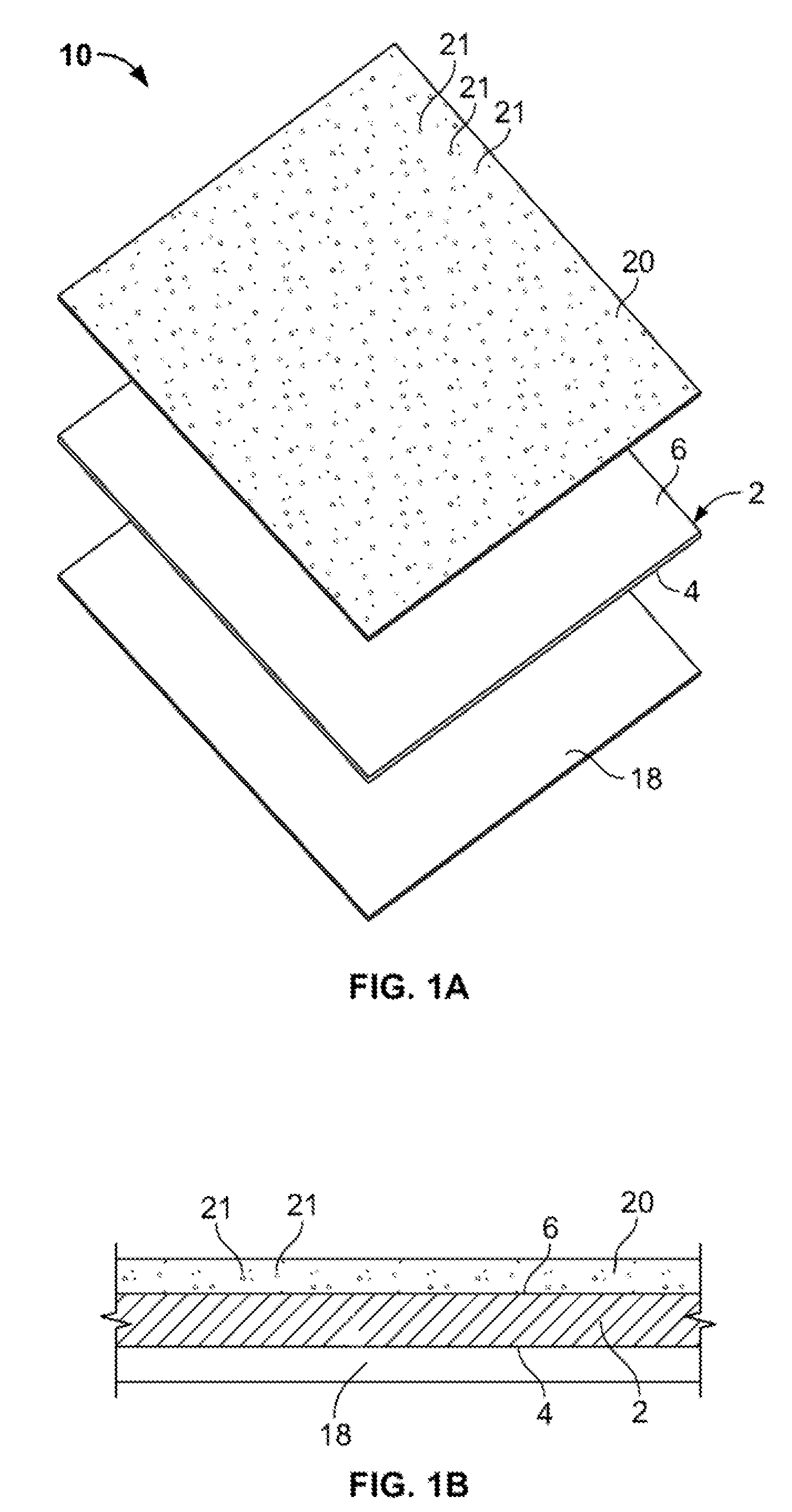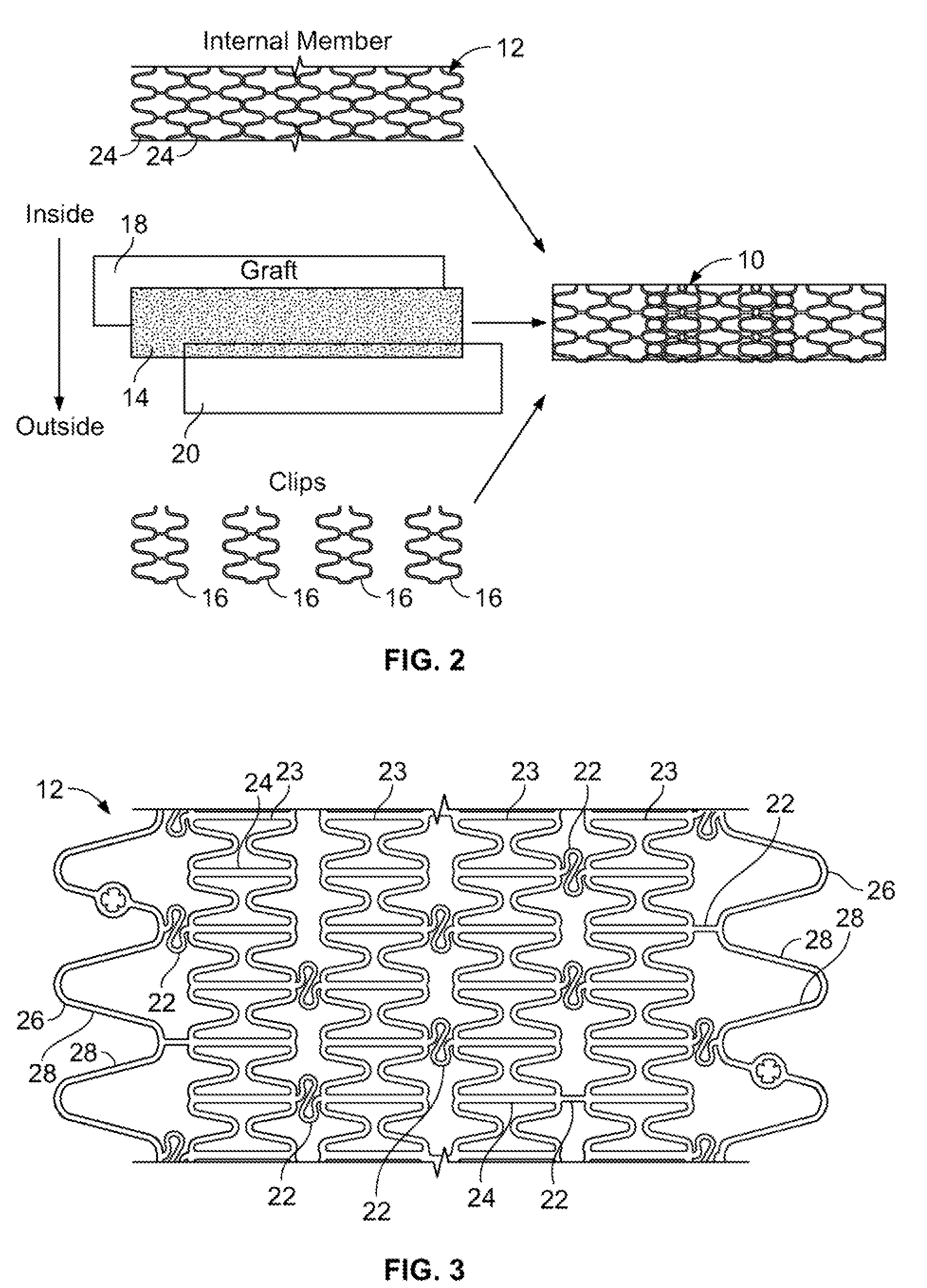Anti-restenotic therapeutic device
a technology of anti-restenotic and therapeutic devices, which is applied in the direction of prosthesis, surgery, blood vessels, etc., can solve the problems of ischemic events, significant clinical problems, and restnosis after percutaneous coronary intervention, and achieve the effect of promoting beneficial cell growth and enhancing the growth of a type of cells
- Summary
- Abstract
- Description
- Claims
- Application Information
AI Technical Summary
Benefits of technology
Problems solved by technology
Method used
Image
Examples
Embodiment Construction
[0027]An anti-restenotic device is provided for repairing a tissue. Such a device may take a variety of forms. Examples include a patch, a sheet, a tube, a pocket, a sleeve, a stent, a graft-stent, and, particularly, a composite expandable device. FIGS. 1A-1B illustrate an example of a device 10 having the form of a patch or sheet. Here the device 10 comprises a structure 2 having a first surface 4 and a second surface 6. The device 10 further comprises a bioactive layer 18 disposed on the first surface 4, wherein the bioactive layer 18 enhances growth of a type of cells thereon. The device 10 further includes an anti-restenosis layer 20 disposed on the second surface 6, wherein the anti-restenosis layer inhibits growth of another type of cells thereon. The anti-restenosis layer includes an anti-restenosis agent 21 which is eluted therefrom as will be discussed in later sections. The structure 2 and layers 4, 6 are shown separated for illustration purposes. FIG. 1B provides a cross ...
PUM
| Property | Measurement | Unit |
|---|---|---|
| thickness | aaaaa | aaaaa |
| time | aaaaa | aaaaa |
| bioactive | aaaaa | aaaaa |
Abstract
Description
Claims
Application Information
 Login to View More
Login to View More - R&D
- Intellectual Property
- Life Sciences
- Materials
- Tech Scout
- Unparalleled Data Quality
- Higher Quality Content
- 60% Fewer Hallucinations
Browse by: Latest US Patents, China's latest patents, Technical Efficacy Thesaurus, Application Domain, Technology Topic, Popular Technical Reports.
© 2025 PatSnap. All rights reserved.Legal|Privacy policy|Modern Slavery Act Transparency Statement|Sitemap|About US| Contact US: help@patsnap.com



